- Home
- slideshows
- miscellaneous
- From nurses to surgeons, here's how much everyone makes in a hospital
From nurses to surgeons, here's how much everyone makes in a hospital
30. Janitors and cleaners, except maids and housekeeping cleaners, earn a median of $29,820 a year, and there are 73,250 employed in hospitals.

29. Orderlies earn a median of $30,200 a year, and there are 39,880 employed in hospitals.

What they do, according to O*NET: Transport patients to areas such as operating rooms or X-ray rooms using wheelchairs, stretchers, or moveable beds. May maintain stocks of supplies or clean and transport equipment.
28. Nursing assistants earn a median of $31,530 a year, and there are 405,340 employed in hospitals.

What they do, according to O*NET: Provide basic patient care under direction of nursing staff. Perform duties such as feed, bathe, dress, groom, or move patients, or change linens. May transfer or transport patients. Includes nursing care attendants, nursing aides, and nursing attendants.
27. Cooks (institution and cafeteria) earn a median of $31,930 a year, and there are 35,050 employed in hospitals.
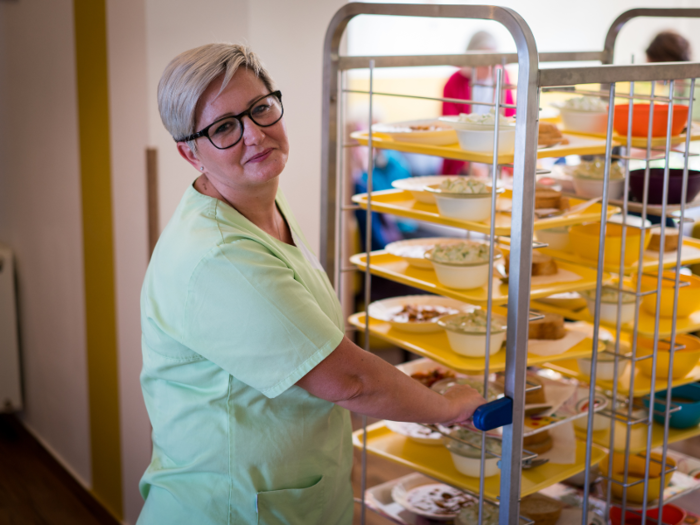
What they do, according to O*NET: Prepare and cook large quantities of food for institutions, such as schools, hospitals, or cafeterias; clean and inspect galley equipment, kitchen appliances, and work areas to ensure cleanliness and functional operation.
26. Phlebotomists earn a median of $34,750 a year, and there are 47,240 employed in hospitals.
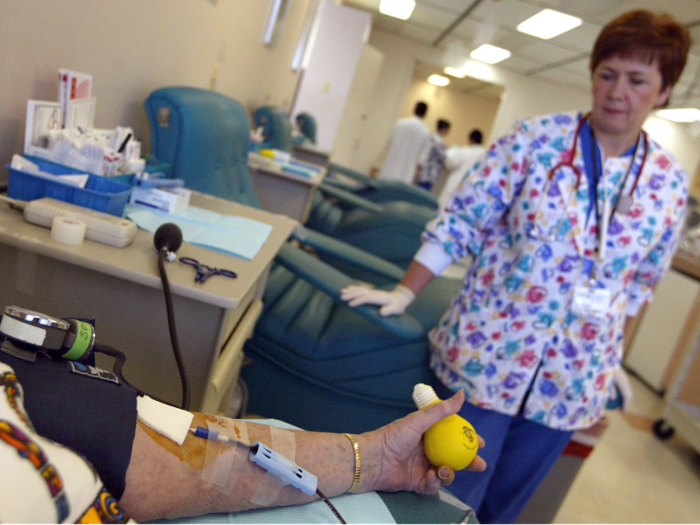
What they do, according to O*NET: Draw blood for tests, transfusions, donations, or research. May explain the procedure to patients and assist in the recovery of patients with adverse reactions.
25. Security guards earn a median of $36,680 a year, and there are 43,130 employed in hospitals.
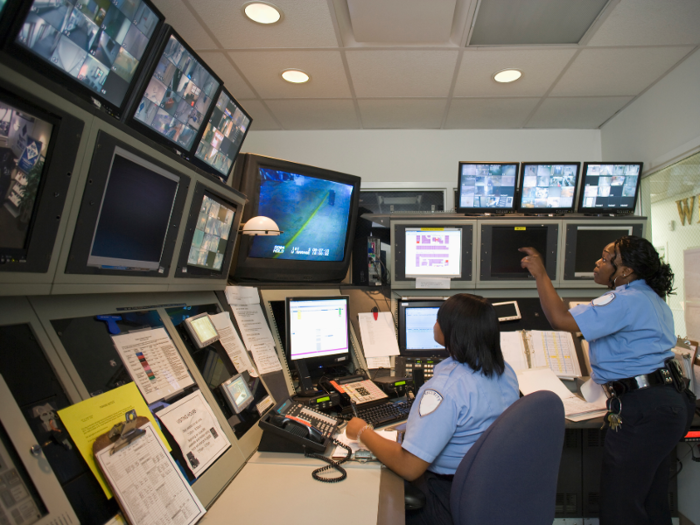
What they do, according to O*NET: Guard, patrol, or monitor premises to prevent theft, violence, or infractions of rules. May operate X-ray and metal detector equipment.
24. Emergency medical technicians and paramedics earn a median of $38,710 a year, and there are 47,790 employed in hospitals.

What they do, according to O*NET: Assess injuries, administer emergency medical care, and extricate trapped individuals. Transport injured or sick persons to medical facilities.
23. Pharmacy technicians earn a median of $38,940 a year, and there are 68,730 employed in hospitals.

What they do, according to O*NET: Prepare medications under the direction of a pharmacist. May measure, mix, count out, label, and record amounts and dosages of medications according to prescription orders.
22. Medical records and health information technicians earn a median of $46,520 a year, and there are 71,660 employed in hospitals.
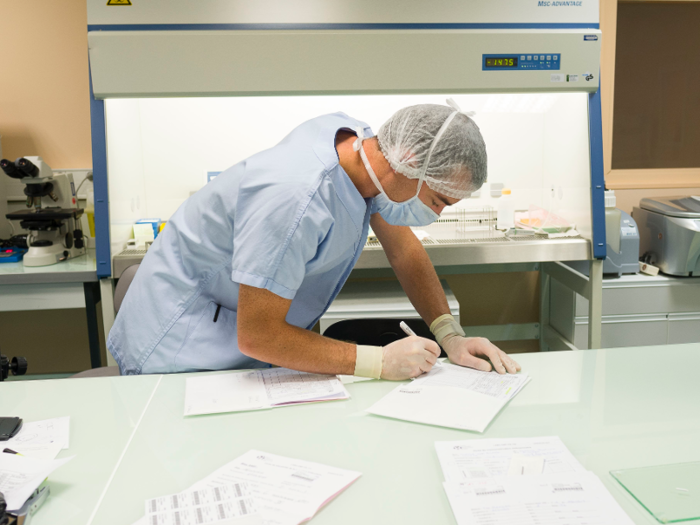
What they do, according to O*NET: Compile, process, and maintain medical records of hospital and clinic patients in a manner consistent with medical, administrative, ethical, legal, and regulatory requirements of the health care system. Process, maintain, compile, and report patient information for health requirements and standards in a manner consistent with the healthcare industry's numerical coding system.
21. Surgical technologists earn a median of $48,670 a year, and there are 79,080 employed in hospitals.
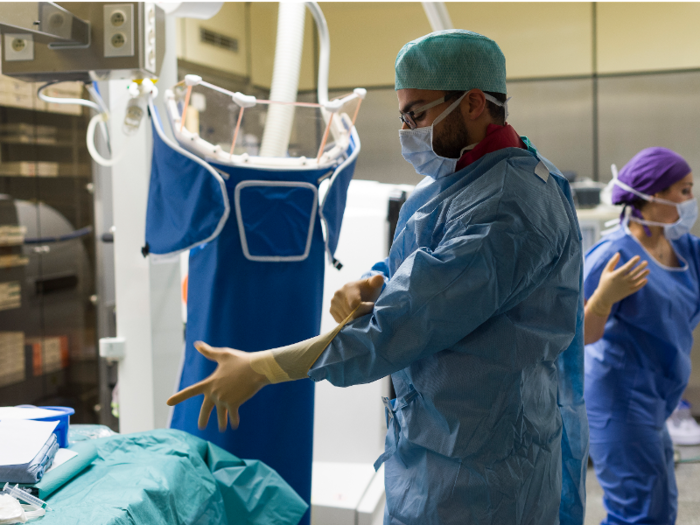
What they do, according to O*NET: Assist in operations, under the supervision of surgeons, registered nurses, or other surgical personnel. May help set up operating room, prepare and transport patients for surgery, adjust lights and equipment, pass instruments and other supplies to surgeons and surgeon's assistants, hold retractors, cut sutures, and help count sponges, needles, supplies, and instruments.
20. Clinical laboratory technologists and technicians earn a median of $55,890 a year, and there are 160,510 employed in hospitals.
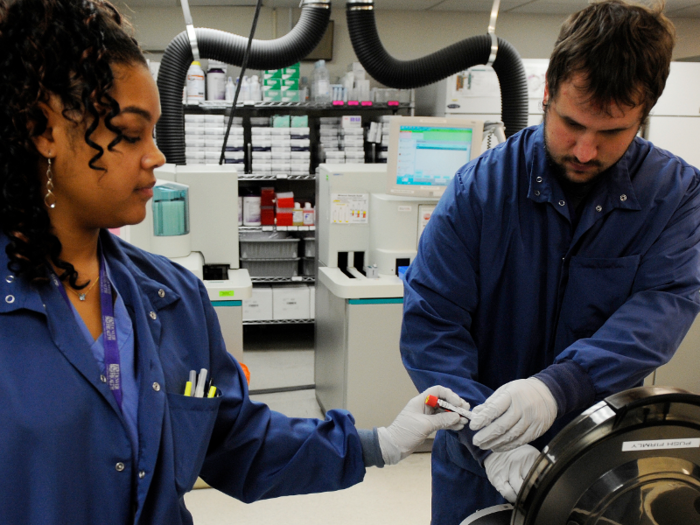
What they do, according to O*NET: Perform complex medical laboratory tests for diagnosis, treatment, and prevention of disease. May train or supervise staff. Operate, calibrate, or maintain equipment used in quantitative or qualitative analysis, such as spectrophotometers, calorimeters, flame photometers, or computer-controlled analyzers.
19. Public relations specialists earn a median of $62,460 a year, and there are 4,720 employed in hospitals.
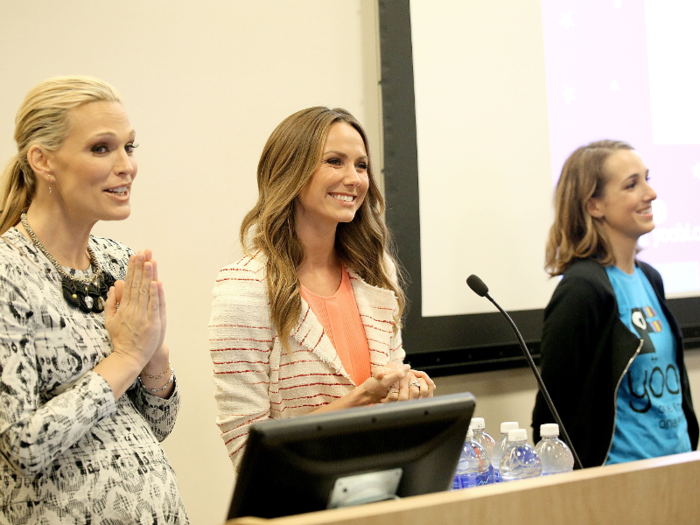
What they do, according to O*NET: Engage in promoting or creating an intended public image for individuals, groups, or organizations. May write or select material for release to various communications media.
18. Dietitians and nutritionists earn a median of $62,720 a year, and there are 20,780 employed in hospitals.
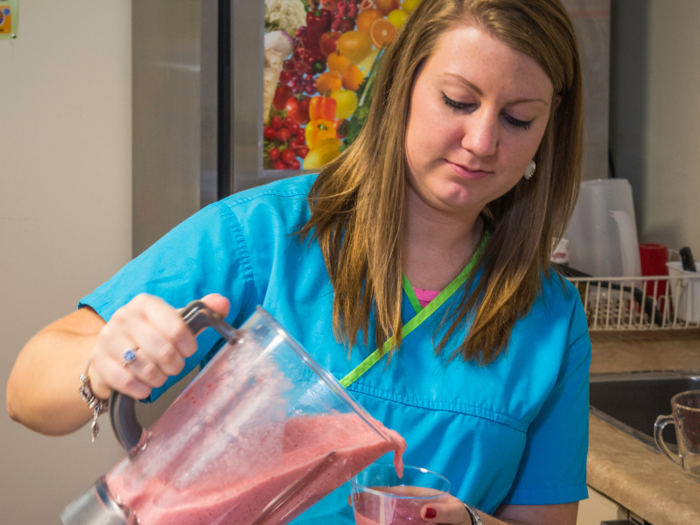
What they do, according to O*NET: Plan and conduct food service or nutritional programs to assist in the promotion of health and control of disease. May supervise activities of a department providing quantity food services, counsel individuals, or conduct nutritional research.
17. Radiologic technologists earn a median of $62,760 a year, and there are 123,820 employed in hospitals.
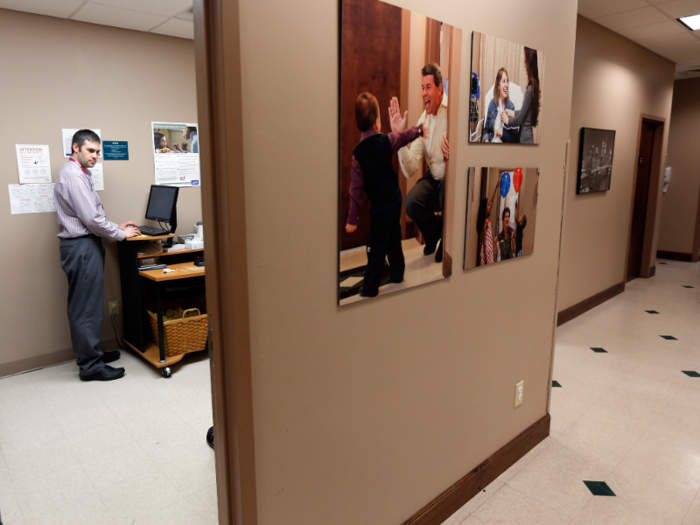
What they do, according to O*NET: Take X-rays and CAT scans or administer nonradioactive materials into patient's blood stream for diagnostic purposes. Includes technologists who specialize in other scanning modalities.
16. Healthcare social workers earn a median of $64,510 a year, and there are 49,280 employed in hospitals.
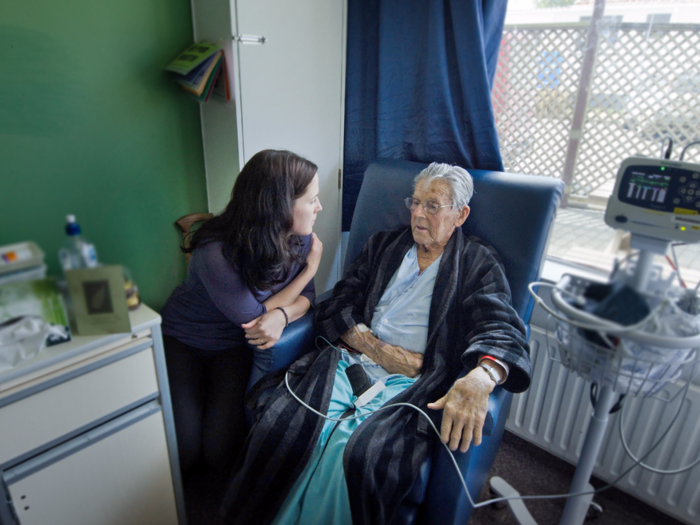
What they do, according to O*NET: Provide individuals, families, and groups with the psychosocial support needed to cope with chronic, acute, or terminal illnesses. Services include advising family care givers, providing patient education and counseling, and making referrals for other services. May also provide care and case management or interventions designed to promote health, prevent disease, and address barriers to access to healthcare.
15. Registered nurses earn a median of $77,670 a year, and there are 1,800,850 employed in hospitals.
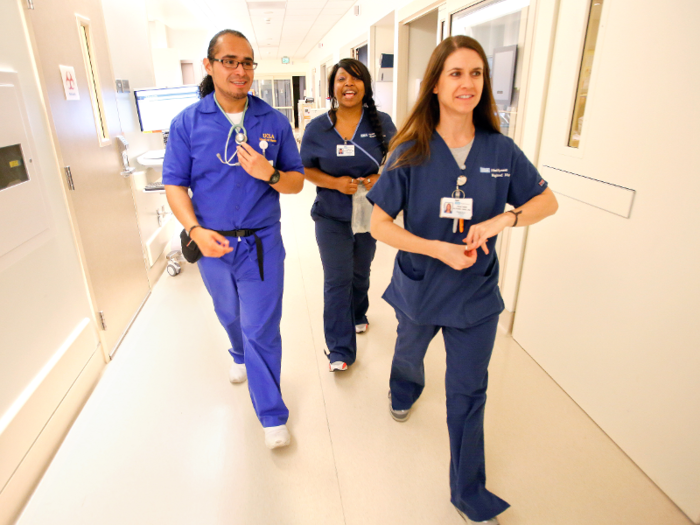
What they do, according to O*NET: Assess patient health problems and needs, develop and implement nursing care plans, and maintain medical records. Administer nursing care to ill, injured, convalescent, or disabled patients. May advise patients on health maintenance and disease prevention or provide case management. Licensing or registration required.
14. Nuclear medicine technologists earn a median of $78,610 a year, and there are 13,890 employed in hospitals.
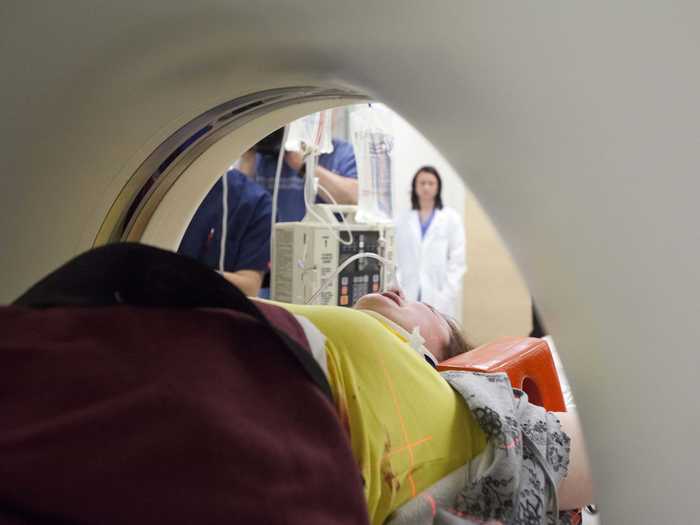
What they do, according to O*NET: Prepare, administer, and measure radioactive isotopes in therapeutic, diagnostic, and tracer studies using a variety of radioisotope equipment. Prepare stock solutions of radioactive materials and calculate doses to be administered by radiologists. Subject patients to radiation. Execute blood volume, red cell survival, and fat absorption studies following standard laboratory techniques.
13. Physical therapists earn a median of $89,750 a year, and there are 62,630 employed in hospitals.
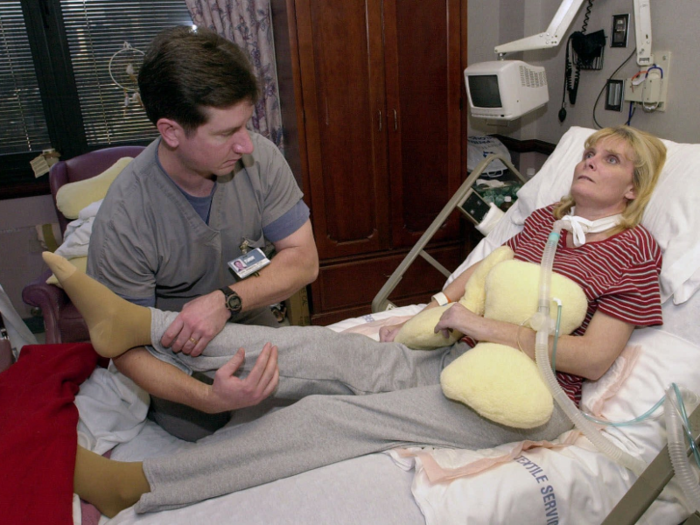
What they do, according to O*NET: Assess, plan, organize, and participate in rehabilitative programs that improve mobility, relieve pain, increase strength, and improve or correct disabling conditions resulting from disease or injury.
12. Physician assistants earn a median of $109,000 a year, and there are 29,710 employed in hospitals.
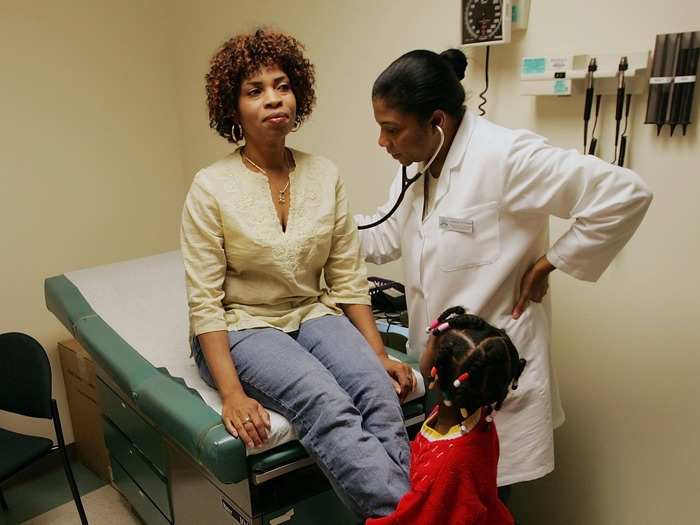
What they do, according to O*NET: Provide healthcare services typically performed by a physician, under the supervision of a physician. Conduct complete physicals, provide treatment, and counsel patients. May, in some cases, prescribe medication. Must graduate from an accredited educational program for physician assistants.
11. Nurse practitioners earn a median of $113,820 a year, and there are 47,560 employed in hospitals.
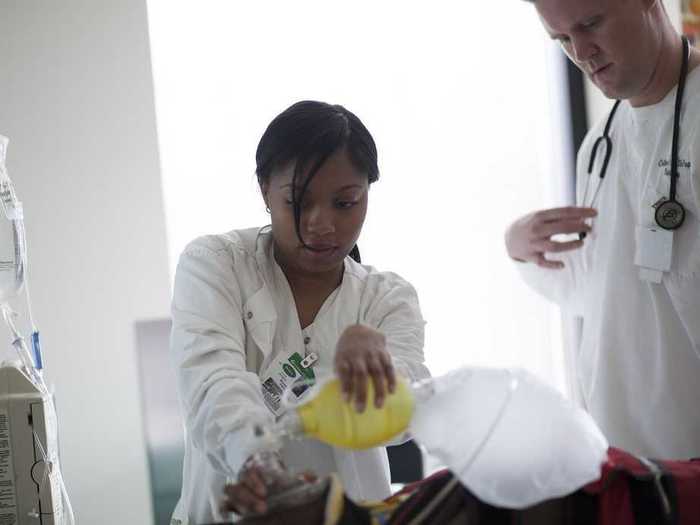
What they do, according to O*NET: Diagnose and treat acute, episodic, or chronic illness, independently or as part of a healthcare team. May focus on health promotion and disease prevention. May order, perform, or interpret diagnostic tests such as lab work and X-rays. May prescribe medication. Must be registered nurses who have specialized graduate education.
10. Medical and health-services managers earn a median of $122,330 a year, and there are 131,220 employed in hospitals.

What they do, according to O*NET: Plan, direct, or coordinate medical and health services in hospitals, clinics, managed care organizations, public health agencies, or similar organizations.
9. Pharmacists earn a median of $125,430 a year, and there are 80,010 employed in hospitals.

What they do, according to O*NET: Dispense drugs prescribed by physicians and other health practitioners and provide information to patients about medications and their use. May advise physicians and other health practitioners on the selection, dosage, interactions, and side effects of medications.
8. Financial managers earn a median of $146,540 a year, and there are 9,670 employed in hospitals.

What they do, according to O*NET: Plan, direct, or coordinate accounting, investing, banking, insurance, securities, and other financial activities of a branch, office, or department of an establishment.
7. Internists (general) earn a median of $164,410 a year, and there are 10,780 employed in hospitals.
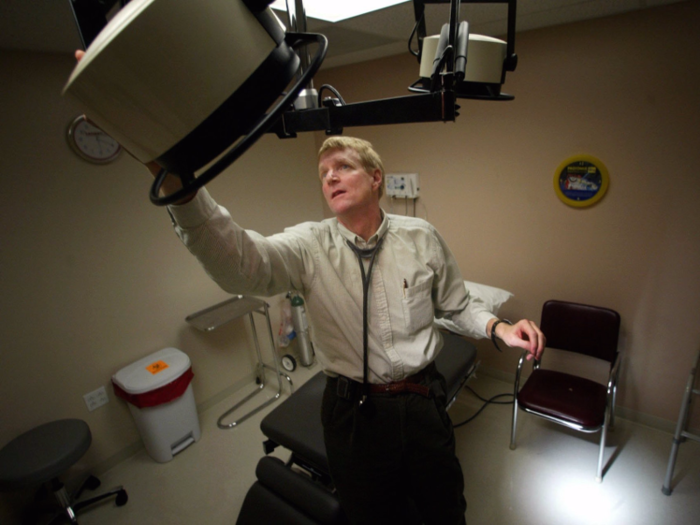
What they do, according to O*NET: Physicians who diagnose and provide non-surgical treatment of diseases and injuries of internal organ systems. Provide care mainly for adults who have a wide range of problems associated with the internal organs.
6. Nurse anesthetists earn a median of $186,840 a year, and there are 13,700 employed in hospitals.
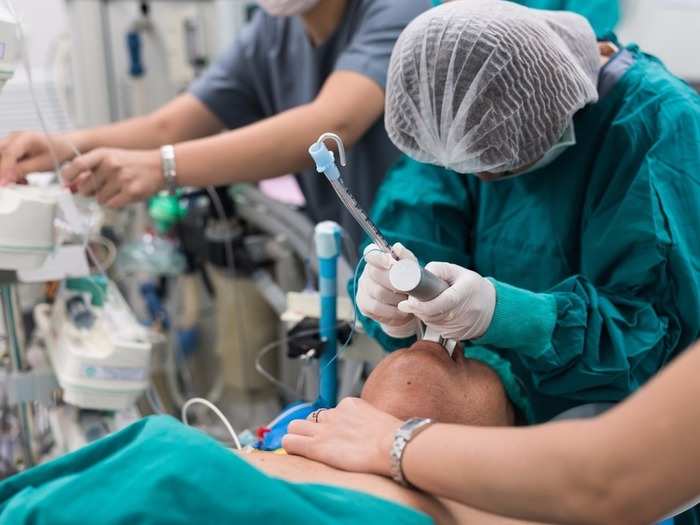
What they do, according to O*NET: Administer anesthesia, monitor patients' vital signs, and oversee patient recovery from anesthesia. May assist anesthesiologists, surgeons, other physicians, or dentists. Must be registered nurses who have specialized graduate education.
5. Family and general practitioners earn a median of $206,430 a year, and there are 21,260 employed in hospitals.
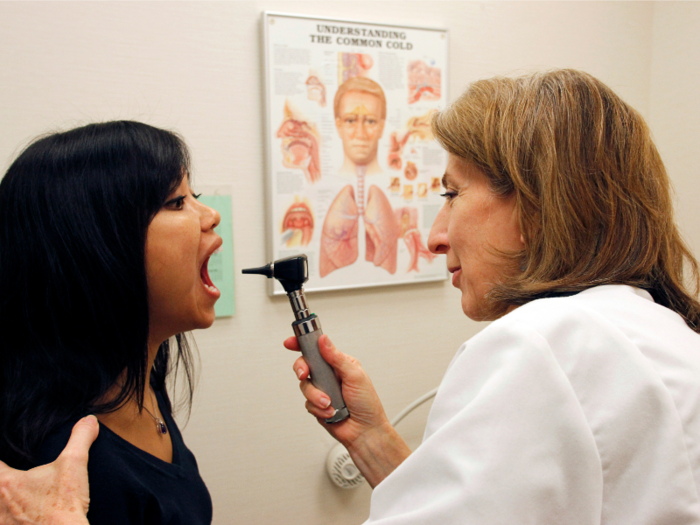
What they do, according to O*NET: Physicians who diagnose, treat, and help prevent diseases and injuries that commonly occur in the general population. May refer patients to specialists when needed for further diagnosis or treatment.
4. Anesthesiologists earn a median of $211,540 a year, and there are 3,950 employed in hospitals.
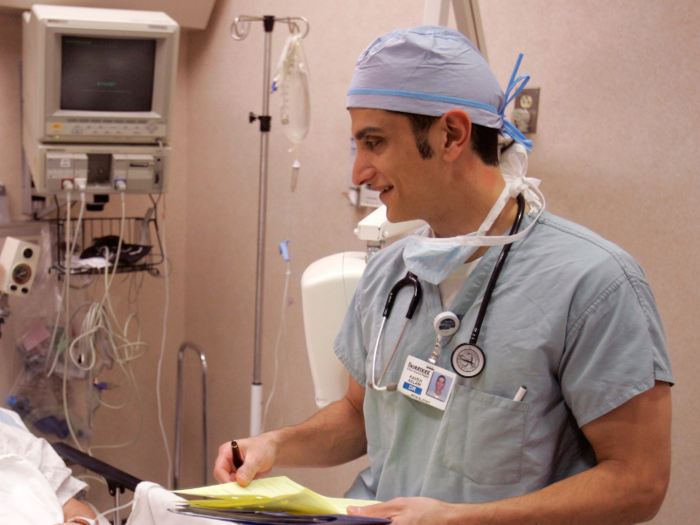
What they do, according to O*NET: Physicians who administer anesthetics prior to, during, or after surgery or other medical procedures.
3. Obstetricians and gynecologists earn a median of $215,710 a year, and there are 3,350 employed in hospitals.
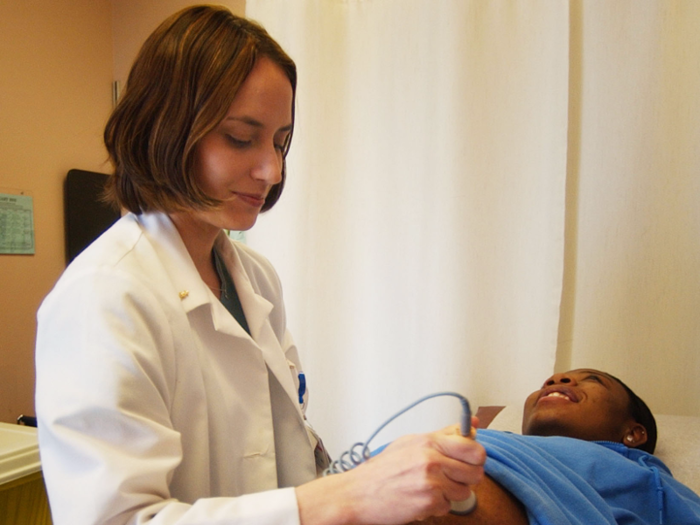
What they do, according to O*NET: Physicians who provide medical care related to pregnancy or childbirth and those who diagnose, treat, and help prevent diseases of women, particularly those affecting the reproductive system. May also provide general medical care to women.
2. Surgeons earn a median of $226,080 a year, and there are 7,220 employed in hospitals.
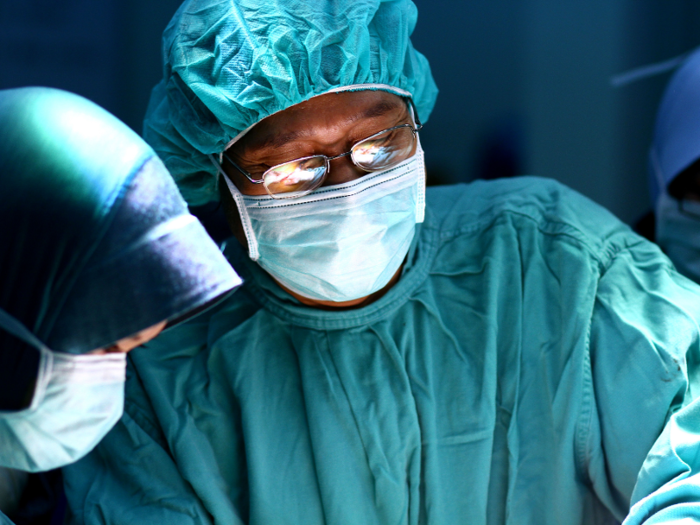
What they do, according to O*NET: Physicians who treat diseases, injuries, and deformities by invasive, minimally invasive, or noninvasive surgical methods, such as using instruments, appliances, or by manual manipulation.
1. Chief executives earn a median of $242,550 a year, and there are 4,440 employed in hospitals.

What they do, according to O*NET: Determine and formulate policies and provide overall direction of companies or private and public sector organizations within guidelines set up by a board of directors or similar governing body. Plan, direct, or coordinate operational activities at the highest level of management with the help of subordinate executives and staff managers.
Popular Right Now
Popular Keywords
Advertisement